Opened 1883 Track gauge 1,067 mm (3 ft 6 in) | Line length 74.7 km (46.4 mi) Operating speed | |
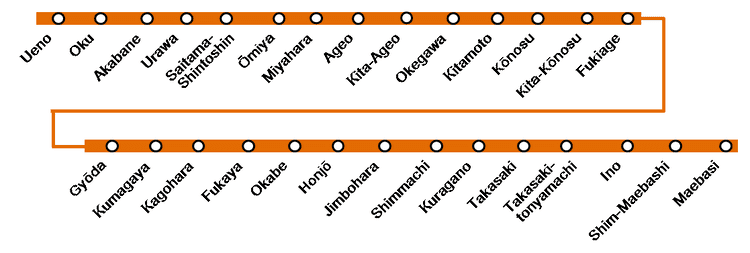 | ||
Electrification 1,500 V DC overhead catenary Operator | ||
Takasaki line at omiya station
The Takasaki Line (高崎線, Takasaki-sen) is a Japanese railway line which connects Ōmiya Station in Saitama, Saitama Prefecture and Takasaki Station in Takasaki, Gunma Prefecture. It is owned and operated by the East Japan Railway Company (JR East). The Ueno - Omiya - Takasaki - Shinmaebashi line was the first privately built railway in Japan.
Contents
- Takasaki line at omiya station
- Services
- Limited express express
- Commuter rapid
- Rapid Urban
- Local
- Shnan Shinjuku Line services
- Special Rapid
- Rapid
- Limited Express
- Home Liner Knosu
- Station list
- Rolling stock
- History
- Former connecting lines
- References
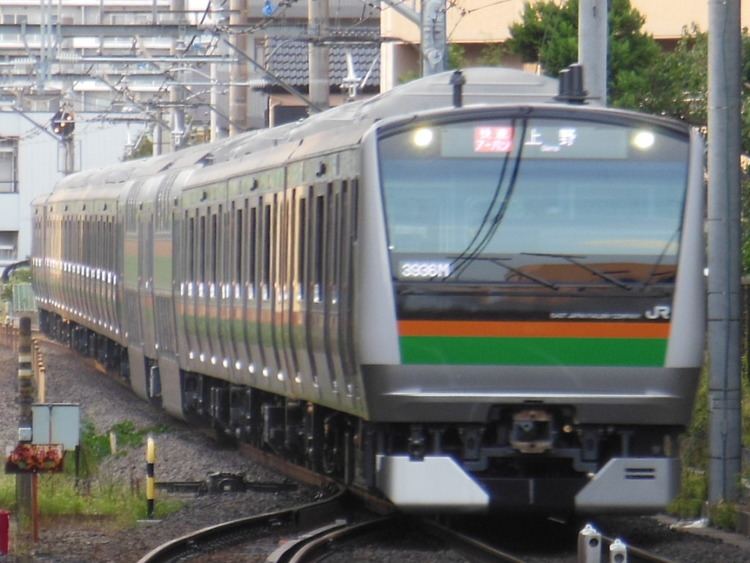
All services on the line (excluding through Shonan-Shinjuku Line trains) run to/from Ueno Station in Tokyo via the Tōhoku Main Line. The line was extended to Tokyo Station via the Ueno-Tokyo Line that opened in March 2015.
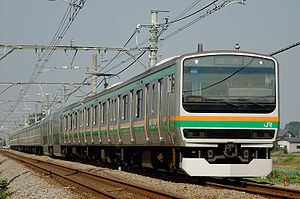
As the Takasaki Line serves many major cities within Saitama Prefecture, it is a vital means of transport within the prefecture. National Route 17 and its historical predecessor, the Nakasendō, run parallel to the line.
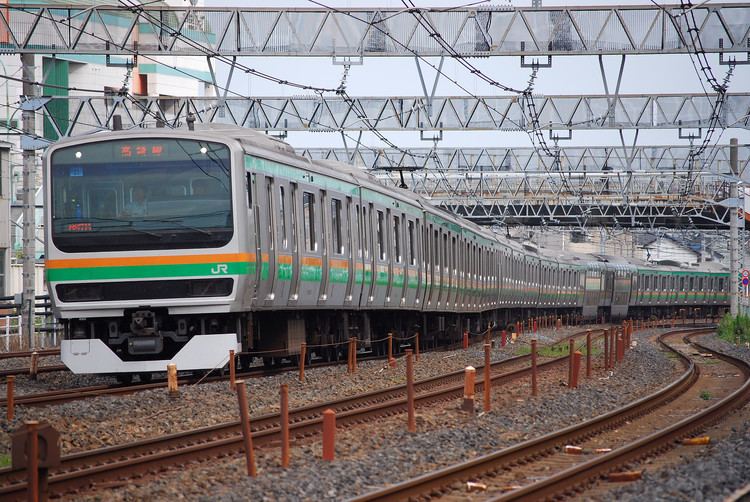
Services
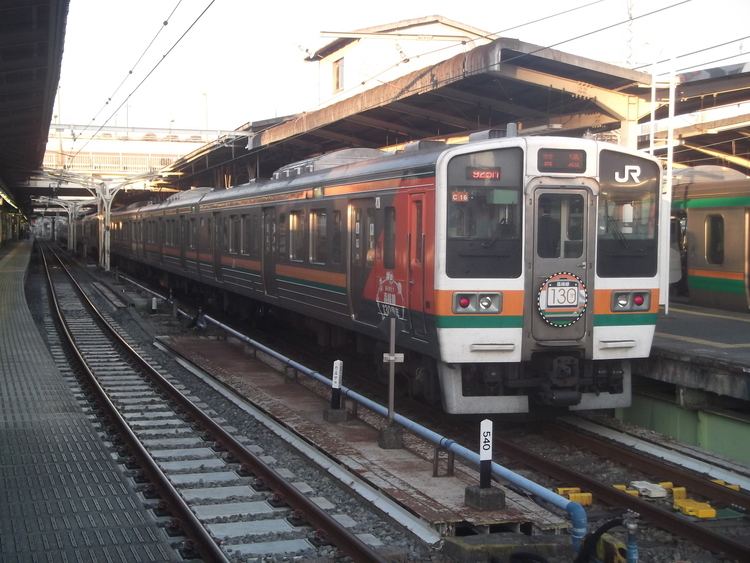
Services on the Takasaki Line are typically divided into those starting and terminating at Ueno and Shōnan-Shinjuku Line through services from Shinjuku, Ikebukuro, and points south. Between Ueno and Ōmiya, trains share the track with the Tōhoku Main Line (Utsunomiya Line), both of which serve as de facto express services compared to the parallel Keihin-Tōhoku Line. Service on the line is provided by 15-car E231 series and E233-3000 series four-door suburban commuter EMUs with two Green cars; north of Kagohara, this is reduced to 10-cars.
Limited express / express

Prior to the opening of the Joetsu Shinkansen in 1982 and the Nagano Shinkansen in 1997, many Niigata- and Nagano-bound limited express and express services used the line, including the Toki, Asama, and Hakutaka. However, the Shinkansen reduced the need for most of these limited express services, and only a few remain. These include:
Commuter rapid
Commuter rapid services operate on weekday evenings only.
Rapid Urban
Rapid Urban services run between Ueno and Takasaki, skipping some intermediate stations. There are two Takasaki-bound services every morning and seven Takasaki/Maebashi-bound and five Ueno-bound services on weekend evenings (replacing weekday commuter rapid services).
Local
Local trains run approximately four times hourly; one or two of those terminates at Kagohara, while the rest terminate at Takasaki, Shin-Maebashi, or Maebashi.
Shōnan-Shinjuku Line services
Within the Takasaki Line, Shōnan-Shinjuku Line special rapid and rapid trains are each operated once per hour. Unlike regular Ueno bound or originating trains, they bypass Saitama-Shintoshin station as it has no platform for the tracks used by the Shonan-Shinjuku line. Previously bypassed Urawa station now has a newly constructed platform that entered service in March 2013.
All trains are 10- or 15-car E231 or E233 series EMUs.
Special Rapid
Special rapid trains operate once hourly to Takasaki, making limited stops. They skip Ebisu Station.
Rapid
Rapid trains operate once hourly to Kagohara, stopping at all stations while within the Takasaki Line; this increases 2-3 times an hour during the mornings and evenings, when Takasaki-, Odawara-, and Kozu-bound trains also operate. North of Kagohara, all services are operated with 10-car trainsets.
Limited Express
Home Liner Kōnosu
Four trains bound for Kōnosu depart Ueno every weekday evening. Passengers can board only at Ueno; all other stations are for disembarking only. Service is provided by 7-car 185 series and 9-car 489 series EMU trainsets.
Station list
Rolling stock
History
The Nippon Railway Co., the first private railway company in Japan, opened the Ueno - Omiya - Shinmachi section in 1883, and extended the line to Takasaki (and Shinmaebashi) the following year. The company was nationalised in 1906. The line was double-tracked between 1927 and 1930, and electrified in 1952.
